Seismic Response of Earth-Rock Dams with Innovative Antiseepage Walls on the Effect of Microscopic Fluid-Solid Coupling
Abstract
:1. Introduction
2. Theory and Model
2.1. Theoretical Research
- Soil skeleton is an ideal continuous porous medium, of which compressibility is ignored;
- Pore water is compressible and its flow obeys the generalized Darcy’s law;
- Soils are isotropic medium and pores are interconnected;
- Pore size is much smaller than the seimic wavelength;
- The effect of temperature is ignored.
2.2. Static Fluid-Solid Coupling Model
2.2.1. Model Building
2.2.2. Boundary Conditions
2.3. Dynamic Viscoelastic Constitutive Model
2.3.1. DMA Test
2.3.2. Derivation of Model
2.3.3. Development of Generalized Maxwell Model
- (1)
- Differential derivation of generalized Maxwell model
- (2)
- Program development
2.4. Dynamic Fluid-Solid Coupling Model
2.4.1. Boundary Conditions
2.4.2. Earthquake Wave
2.4.3. Damping
3. Results and Discussion
3.1. Model Verification
3.2. Coupling Effect
3.3. Influence Factors
3.3.1. Reservoir Water Level
3.3.2. Wall’s Density
3.3.3. Wall’s Thickness
3.3.4. Wall’s Materials
4. Conclusions
- (1)
- The peak acceleration of the antiseepage wall was observed to increase as a result of the concurrent actions of reservoir water on both the stress field and seepage field of the earth-rock dam. This increase in the dam’s acceleration response consequently led to an elevation in the peak acceleration of the wall. Additionally, the application of microscopic fluid-solid coupling had a notable impact, resulting in a 25% and 13% increase, respectively, in both the maximum compressive and tensile stresses experienced by the wall. Moreover, the displacement of the polymer antiseepage wall experienced a significant increase due to the constraints imposed by the earth-rock dam. Consequently, it is imperative to consider the effect of fluid-solid coupling in the safety assessment and analysis of earth-rock dams.
- (2)
- Considering the effect of fluid-solid coupling, the peak acceleration, dynamic stress, and displacement of the polymer antiseepage wall increased progressively as the water level rose. Furthermore, the acceleration, compressive stress, and tensile stress of the polymer antiseepage wall also increased with the density of polymer materials due to the increased stiffness and seismic response of the wall. However, as the wall thickness increased, the acceleration, compressive stress, tensile stress, and displacement of the polymer antiseepage wall decreased due to the enhanced energy dissipation capacity of the wall.
- (3)
- Under the same working conditions, the peak acceleration of the polymer antiseepage wall was smaller than that of the concrete one due to the effect of microscopic fluid-solid coupling. Under the same earthquake, the compressive and tensile stresses of the polymer antiseepage wall were both smaller than their respective compressive and tensile strengths, which indicated sufficient safety reserves. while the tensile stress of the concrete antiseepage wall exceeded its tensile strength, causing the wall to be damaged. The displacement of the polymer antiseepage wall was greater than that of the concrete wall due to the flexible nature of polymer materials and their ability to self-recover from large deformations.
Author Contributions
Funding
Institutional Review Board Statement
Informed Consent Statement
Data Availability Statement
Acknowledgments
Conflicts of Interest
References
- Yang, Q.G.; Tan, J.X.; Zhou, H.Q. Features of High-hazard Potential Dam and Key Issues in Reinforcement Design. China Water Resour. 2008, 20, 34–36. [Google Scholar]
- Wang, F.M.; Li, J.; Shi, M.; Guo, C.C. New Seepage-proof and Reinforcing Technologies for Dikes and Dams and their Applications. J. Hydroelectr. Eng. 2016, 35, 1–11. [Google Scholar]
- Wang, F.M.; Guo, C.C.; Gao, Y. Formation of a Polymer Thin Wall Using the Level Set Method. Int. J. Geomech. 2014, 14, 04014021. [Google Scholar] [CrossRef]
- Guo, C.C.; Chu, X.X.; Wang, F.M. The Feasibility of Non-water Reaction Rolymer Grouting Technology Application in Seepage Prevention for Tailings Reservoirs. Water Sci. Technol.-Water Supply 2018, 18, 203–213. [Google Scholar] [CrossRef]
- Guo, C.C.; Wang, F.M. Mechanism Study on the Construction of Ultra-Thin Antiseepage Wall by Polymer Injection. J. Mater. Civ. Eng. 2012, 24, 1183–1192. [Google Scholar]
- Xu, J.G.; Wang, F.M.; Zhong, Y.H.; Wang, B.; Li, X.L.; Sun, N. Stress Analysis of Polymer Diaphragm Wall for Earth-rock Dams Under Static and Dynamic Loads. Chin. J. Geotech. Eng. 2012, 34, 1699–1704. [Google Scholar]
- Li, J.; Zhang, J.W.; Wang, Y.K.; Wang, B. Seismic Response of Earth Dam with Innovative Polymer Antiseepage Wall. Int. J. Geomech. 2020, 20, 04020079. [Google Scholar] [CrossRef]
- Mao, J.; Chen, X.G.; Wang, Z.H.; Si, M.N. Analysis of Representative Seismic Damage to Reservoirs in the Southeast of Mianyang City during Wenchuan Earthquake. J. Disaster Prev. Mitig. Eng. 2015, 35, 137–144. [Google Scholar]
- Ishihara, K.; Ueno, K.; Yamada, S.; Yasuda, S.; Yoneoka, T. Breach of a tailings dam in the 2011 earthquake in Japan. Soil Dyn. Earthq. Eng. 2015, 68, 3–22. [Google Scholar] [CrossRef]
- Agurto-Detzel, H.; Bianchi, M.; Assumpçao, M.; Schimmel, M.; Collaço, B.; Ciardelli, C.; Barbosa, J.R.; Calhau, J. The tailings dam failure of 5 November 2015 in SE Brazil and its preceding seismic sequence. Geophys. Res. Lett. 2016, 43, 4929–4936. [Google Scholar] [CrossRef]
- Zhao, B.; Wang, Y.S.; Luo, Y.H.; Li, J.; Mang, X.; Shen, T. Landslides and dam damage resulting from the Jiuzhaigou earthquake (8 August 2017), Sichuan, China. Open Sci. 2018, 5, 171418. [Google Scholar] [CrossRef] [PubMed]
- Chen, W.J.; Sun, H.; Chen, Y.N. Recent Advances on Macro-scale and Micro-scale Dynamic Interaction Between High Earth-rock Dams and Water. Adv. Sci. Technol. Water Resour. 2013, 33, 10–16. [Google Scholar]
- Liang, H.A. Research on Earthquake Damage Prediction and Rapid Assessment Methods for Earth and Rock Dams. Recent Dev. World Seismol. 2013, 3, 44–45. [Google Scholar]
- Wang, F.M.; Li, J.M.; Fang, H.Y.; Xue, B.H. Analysis of Polymer Cut-off Walll of Yellow River Dyke. Yellow River 2019, 41, 48–52, 86. [Google Scholar]
- Brynk, T.; Hellmich, C.; Fritsch, A.; Zysset, P.; Eberhardsteiner, J. Experimental Poromechanics of Trabecular Bone Strength: Role of Terzaghi’s Effective Stress and of Tissue Level Stress Fluctuations. J. Biomech. 2011, 44, 501–508. [Google Scholar] [CrossRef] [PubMed]
- Biot, M.A. General Theory of Three-Dimensional Consolidation. Appl. Phys 1941, 12, 155–164. [Google Scholar] [CrossRef]
- Lin, B.H. Research on Theory and Numerical Solution for Inspecting Liquefaction Potentical of a Composite Foundation of Sand-Gravel Columns. Ph.D. Thesis, Xi’an University of Technology, Xi’an, China, 1997. [Google Scholar]
- Jamshid, G.; Edward, L.W. Variational Formulation of Dynamics of Fluid-Saturated Porous Elastic Solids. J. Eng. Mech. 1972, 98, 947–963. [Google Scholar]
- Ghaboussi, J.; Wilson, E.L. Seismic Analysis of Earth Dam-reservoir Systems. ASCE J. Soil Mech. Found Div. 1973, 99, 849–886. [Google Scholar] [CrossRef]
- Zhang, Y.W.; Zhang, X.W.; Wang, Z.; Han, X.K. Stdy on the Seismic Behavior of Earth-Rock Dam Located on the Liquefiable Ground. N. China Earthq. Sci. 2021, 39, 17–22, 65. [Google Scholar]
- Zienkiewicz, O.C.; Chang, C.T.; Bettess, P. Drained, Undrained, Consolidating and Dynamic Behaviour Assumptions in Soils. Géotechnique 1980, 30, 385–395. [Google Scholar] [CrossRef]
- Zienkiewicz, O.C. Basic Formulation of Static and Dynamic Behaviours of Soil and Other Porous Media. Appl. Math. Mech. 1982, 3, 457–468. [Google Scholar] [CrossRef]
- Zienkiewicz, O.C.; Shiomi, T. Dynamic Behaviour of Saturated Porous Media; the Generalized Biot Formulation and its Numerical Solution. Int. J. Numer. Anal. Methods Geomech. 1984, 8, 71–96. [Google Scholar] [CrossRef]
- Pan, Z.Y.; Chen, D.H.; Zhao, Y.Y.; Liu, Y.H. Influence of Foundation and Reservoir Water Models on Seismic Responses of the Gravity Dams. J. China Three Gorges Univ. (Nat. Sci.) 2022, 44, 30–37, 76. [Google Scholar]
- Liu, F.; Wang, Z.Z.; Li, K.Z.; Xu, C.; Wu, F.; Zhang, H.L.; Zhang, X.D. Seismic dynamic responses of spillway radial steel gates considering fluid-solid coupling effects. J. Water Resour. Water Eng. 2021, 32, 158–166. [Google Scholar]
- Wang, C.; Zhang, H.Y.; Zhang, Y.J.; Guo, L.N.; Wang, Y.J.; Htun, T.T.T. Influences on the Seismic Response of a Gravity Dam with Different Foundation and Reservoir Modeling Assumptions. Water 2021, 13, 3072. [Google Scholar] [CrossRef]
- Kong, X.J.; Xing, H.J.; Li, H.J. An Explicit Spectral-Element Approach to Fluid-Solid Coupling Problems in Seismic Wave Propagation. Chin. J. Theor. Appl. Mech. 2022, 54, 2513–2528. [Google Scholar]
- Zhang, M.Z.; Zhang, L.; Wang, X.C.; Su, W.; Qiu, Y.X.; Wang, J.T.; Zhang, C.H. A framework for Seismic Response Analysis of Dams Using Numerical Source-to-structure Simulation. Earthq. Eng. Struct. Dyn. 2023, 52, 593–608. [Google Scholar] [CrossRef]
- Rayegani, A.; Nouri, G. Application of Smart Dampers for Prevention of Seismic Pounding in Isolated Structures Subjected to Near-fault Earthquakes. J. Earthq. Eng. 2022, 26, 4069–4084. [Google Scholar] [CrossRef]
- Rayegani, A.; Nouri, G. Seismic collapse probability and life cycle cost assessment of isolated structures subjected to pounding with smart hybrid isolation system using a modified fuzzy based controller. Structures 2022, 44, 30–41. [Google Scholar] [CrossRef]
- Jing, W.; Wang, J.X. Seismic Dynamic Responses of Earth-Rock Dam Considering Wave and Seepage. J. Vibroeng. 2020, 22, 403–415. [Google Scholar] [CrossRef]
- Wang, B.; Yan, L.; Xu, J.G. Centrifuge Shaking Table Testing of Earth-rock Dam with Polymer Diaphragm Wall. J. Disaster Prev. Mitig. Eng. 2021, 41, 1–11. [Google Scholar]
- Liu, W.T.; Li, J.C.; Zhu, B.; Wang, Y.B.; Gao, Y.F.; Chen, Y.M. Centrifuge Shaking Table Modelling Test Study on Densification Anti-Liquefied of Small Earth-Rock Dam Slope. Rock Soil Mech. 2020, 41, 3695–3704. [Google Scholar]
- Dong, Y.K.; Wang, X.N.; Dong, W.X.; Yu, Y.Z. Dynamic Analyses of a High Earth-Rockfill Dam Considering Effects of Solid-Fluid Coupling. Chin. J. Geotech. Eng. 2015, 37, 2007–2013. [Google Scholar]
- Liu, Z.J. Research on Wave Propagation Characteristics and Relevant Problems in Two-Phase Porous Media. Ph.D. Thesis, Zhejiang University, Hangzhou, China, 2015. [Google Scholar]
- He, Y. The Study for the Forward and Inverse Problem of Elastic Wave Equation in Fluid-Saturated Porous Media. Ph.D. Thesis, Harbin Institute of Technology, Harbin, China, 2009. [Google Scholar]
- Wang, Z.H. Seismic Analysis of Subway Station in a Site Interbedded by Saturated Two-Phase and Single-Phase Soil. Ph.D. Thesis, Beijing Jiaotong University, Beijing, China, 2008. [Google Scholar]
- Maier, G.; Zienkiewicz, O.C.; Chan, A.H.C.; Pastor, M.; Schrefler, B.A.; Shiomi, T. Computational Geomechanics: With Special Reference to Earthquake Engineering. Meccanica 2000, 35, 107. [Google Scholar] [CrossRef]
- Xu, J.G.; Liu, C.C.; Wang, B.; Kou, L. Study on Static and Dynamic Response of Earth-Rock Dam with Polymer Anti-Seepage Wall Coupling Two Fields. Yellow River 2019, 41, 129–133. [Google Scholar]
- Li, J.; Zhang, J.W.; Chen, S. Study on Dynamic Viscoelastic Properties and Constitutive Model of Non-Water Reacted Polyurethane Grouting Materials. Measurement 2021, 176, 109–115. [Google Scholar] [CrossRef]
- Zhang, W. Powertrain Rubber Mounting Constitutive Relation and Optimization. Ph.D. Thesis, Tsinghua University, Beijing, China, 2012. [Google Scholar]
- Li, J.; Chen, S.; Zhang, J.W.; Wang, J.L. Dynamic Viscoelastic Property of Non-water Reacted Polymer Materials Based on Dynamic Thermomechanical Analysis. J. Build. Mater. 2020, 23, 1398–1409. [Google Scholar]
- Chakraborty, D.; Choudhury, D. Investigation of the Behavior of Tailings Earthen Dam Under Seismic Conditions. Am. J. Eng. Appl. Sci. 2009, 2, 559–564. [Google Scholar] [CrossRef]
- Xu, J.G.; Fang, S.; Wang, B. Seepage Field and Stress Field Coupling Analysis of Dam with Polymer Anti-seepage Wall. J. Water Resour. Archit. Eng. 2017, 15, 1–5. [Google Scholar]
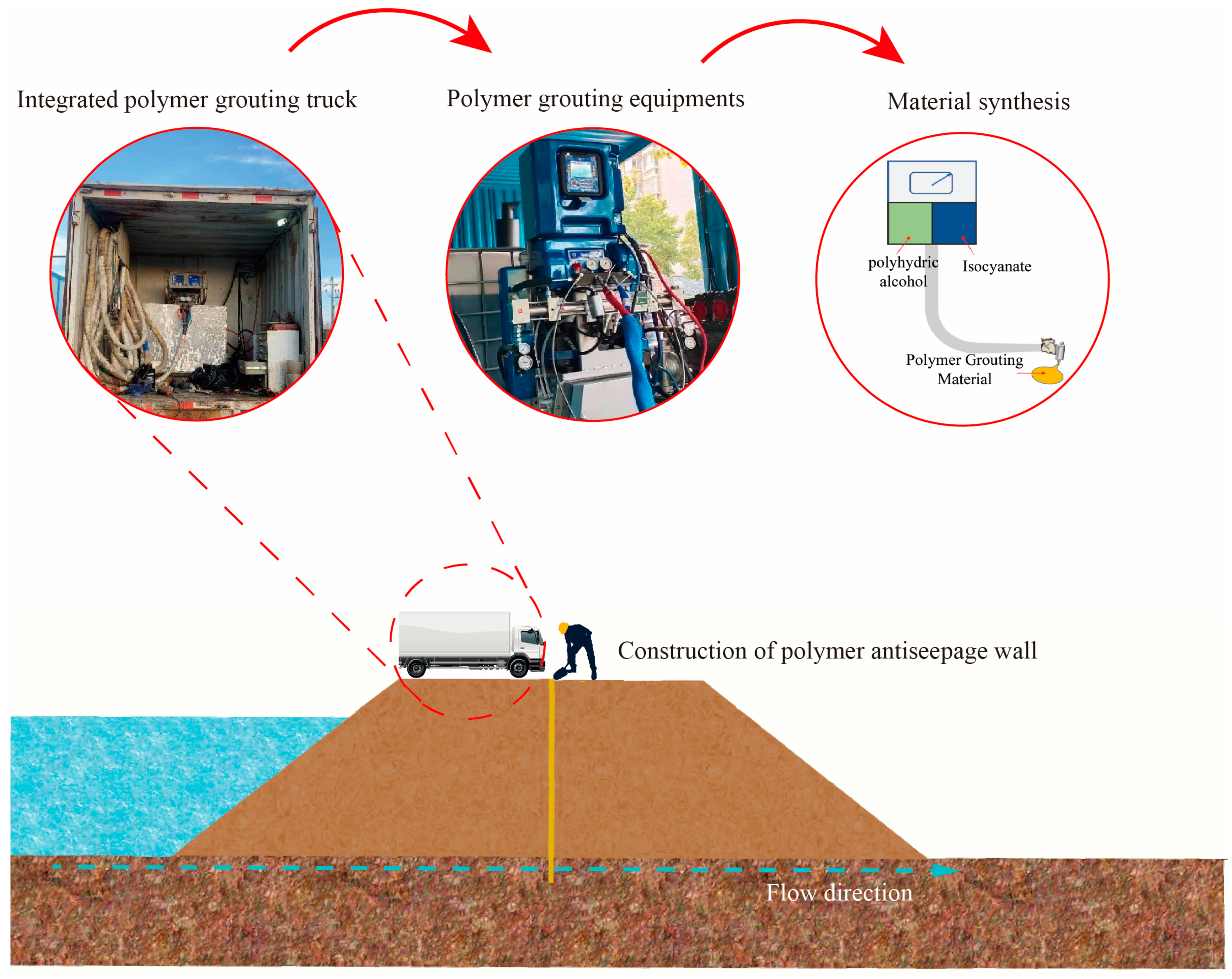
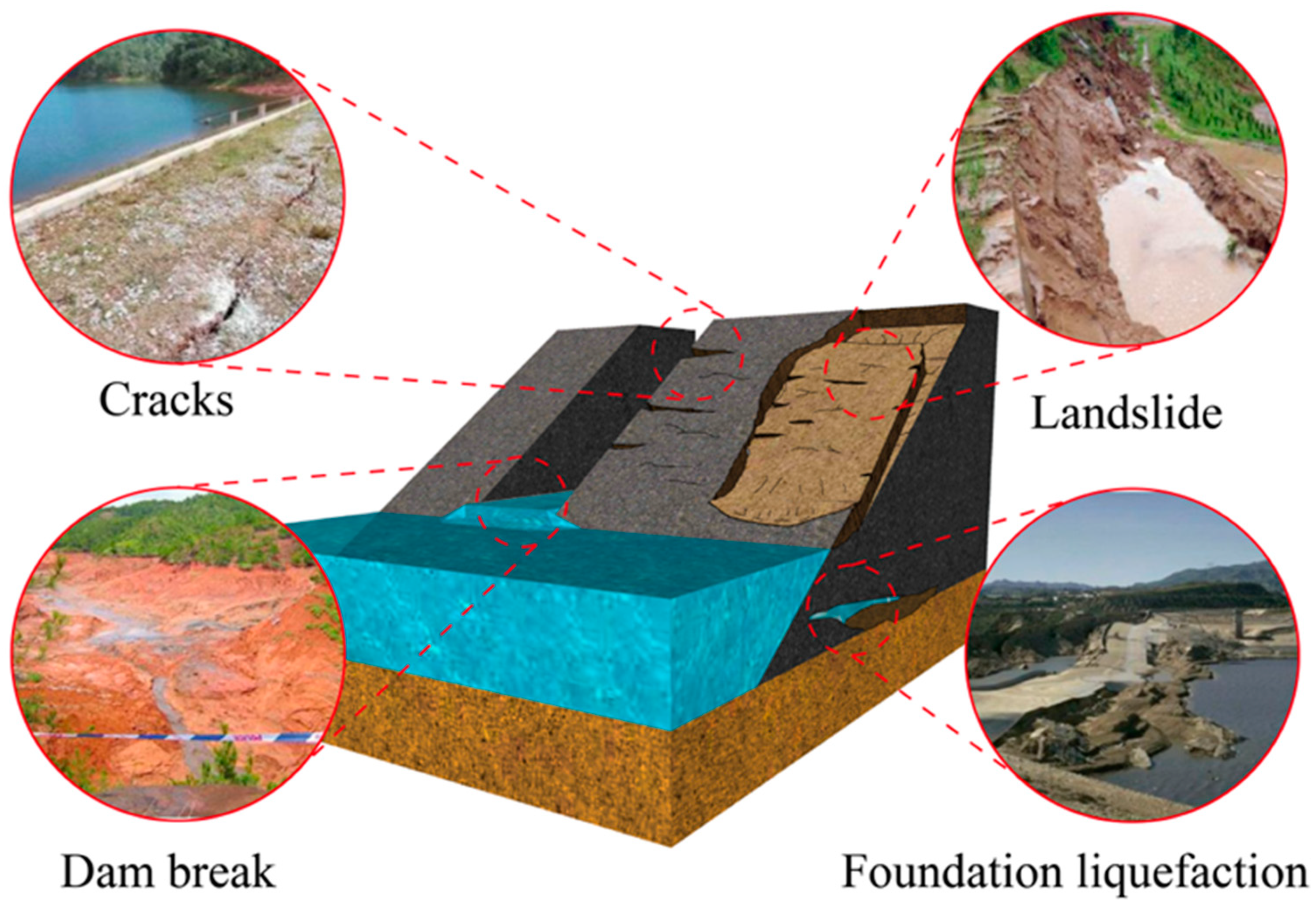
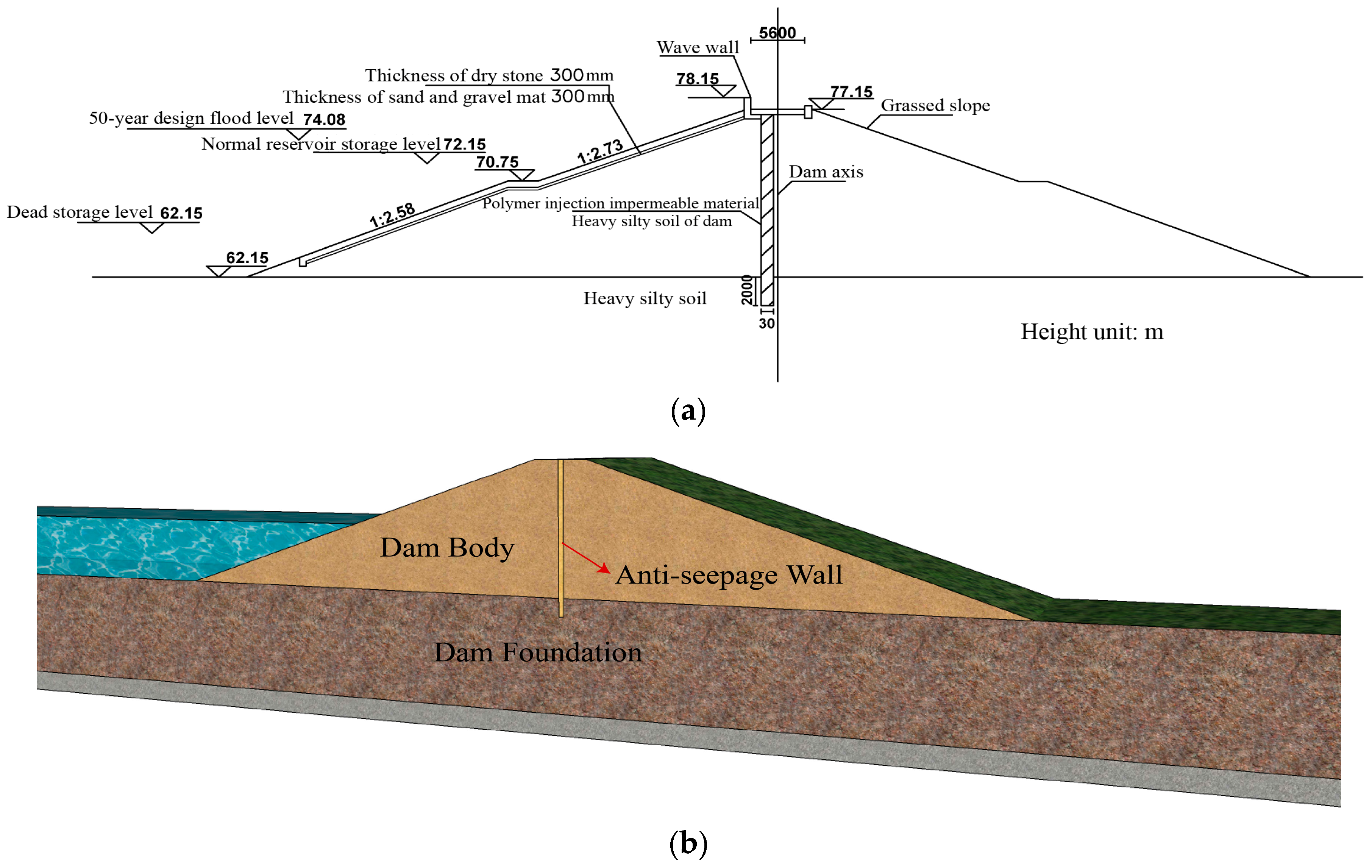

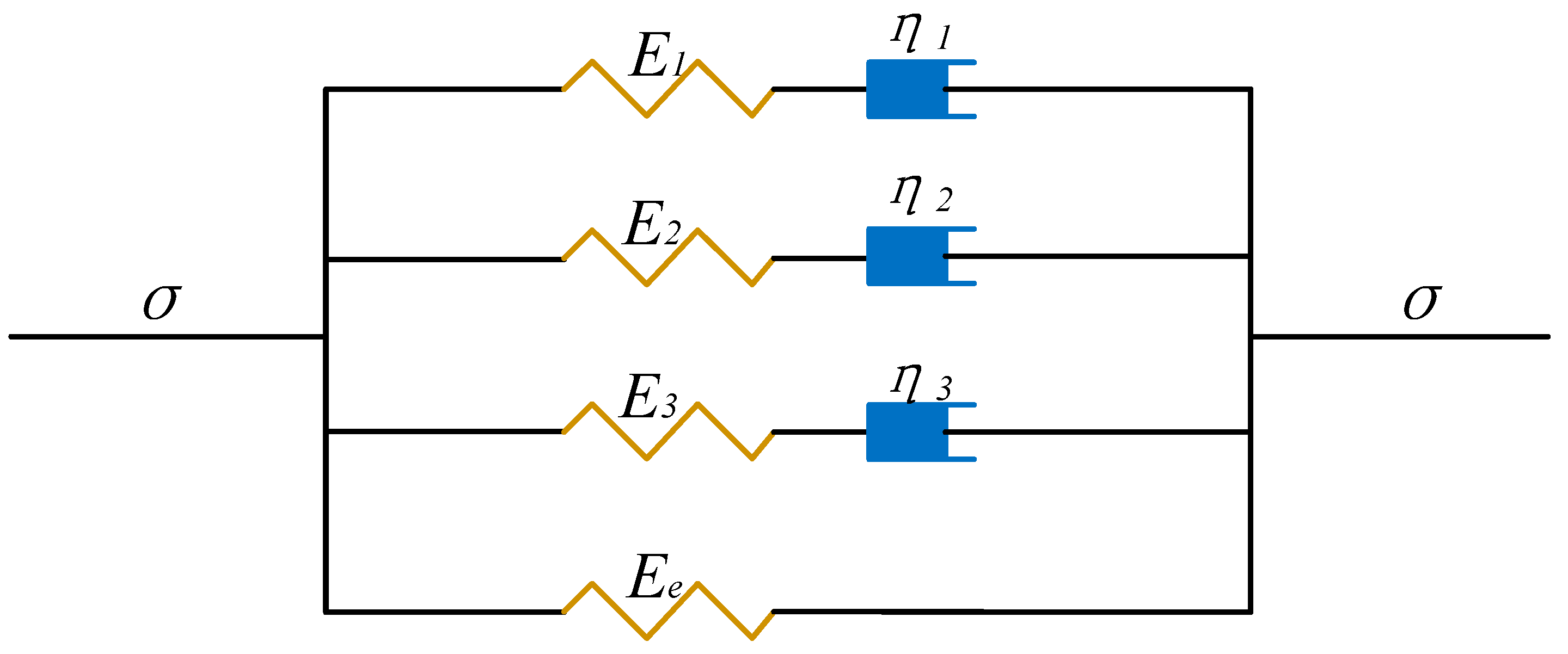

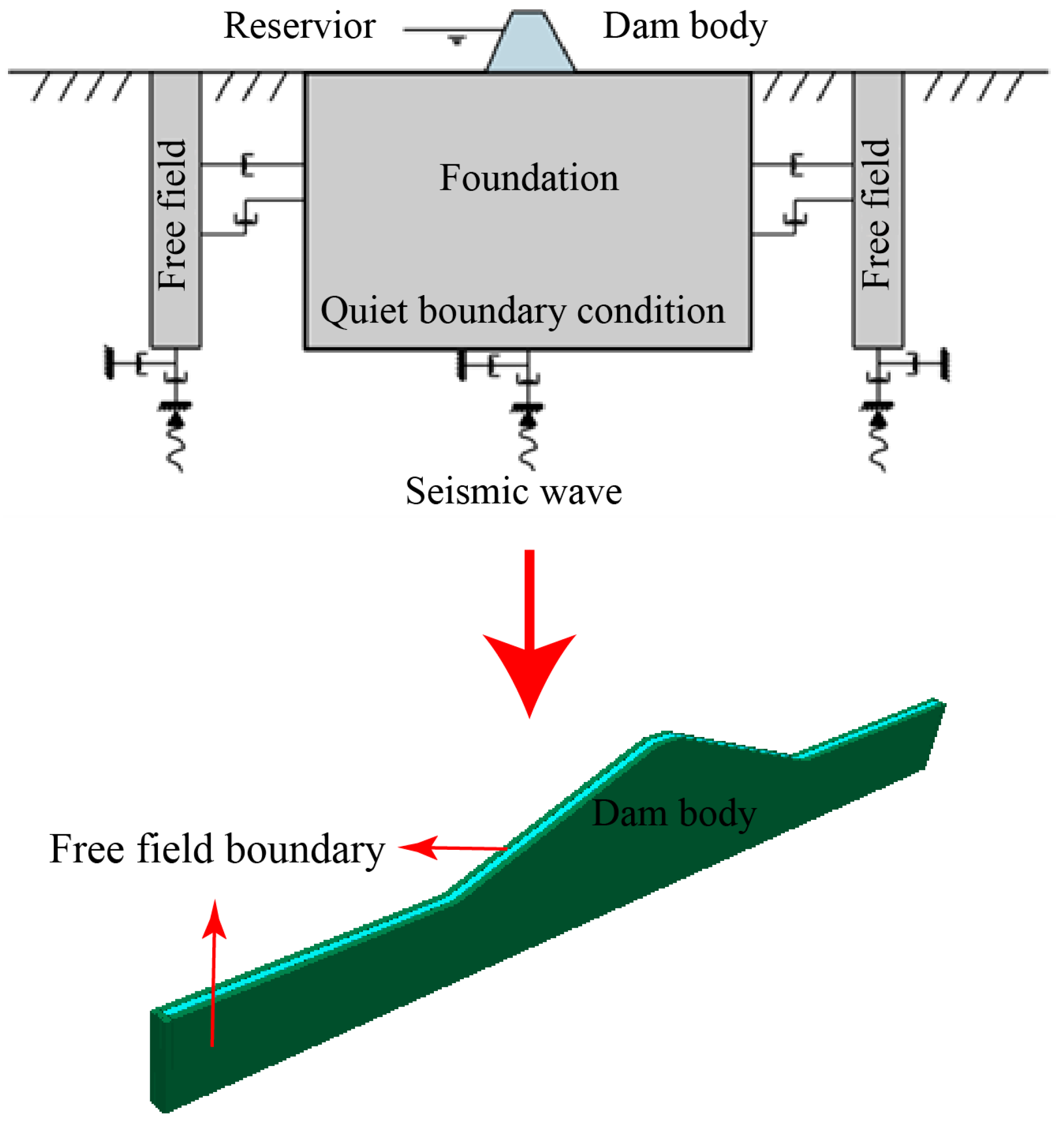

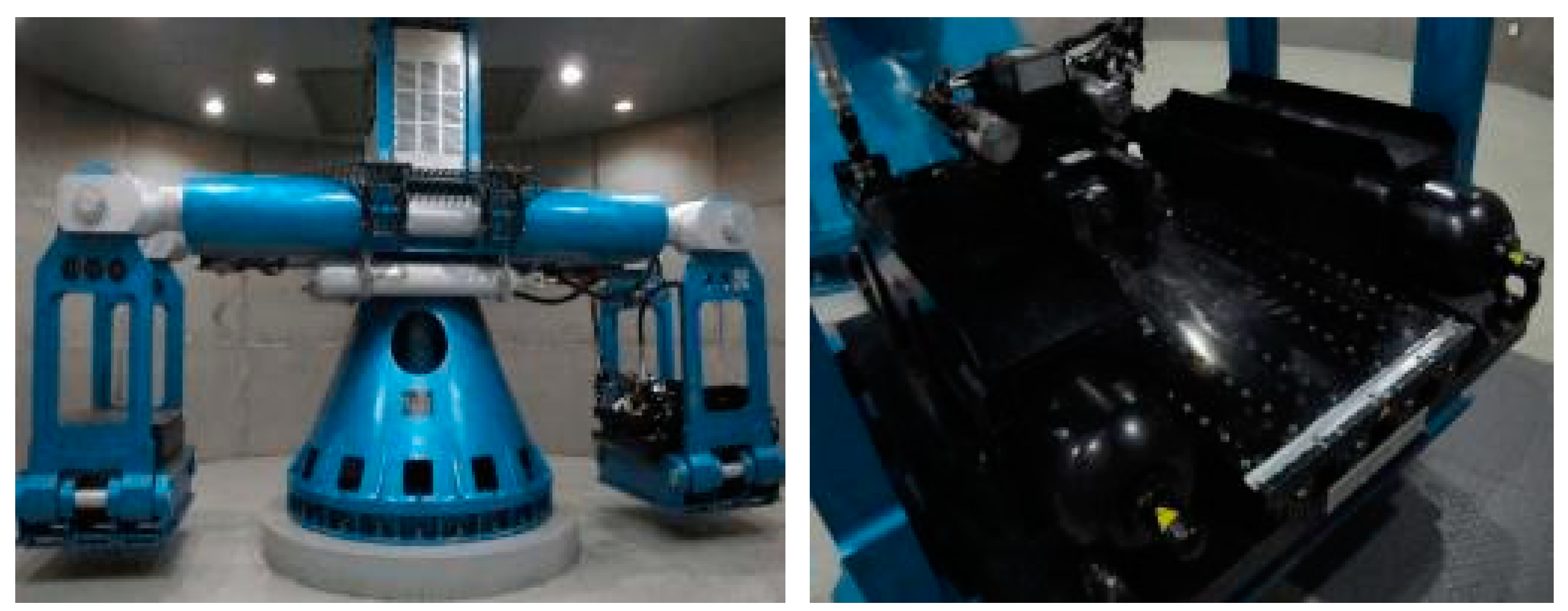
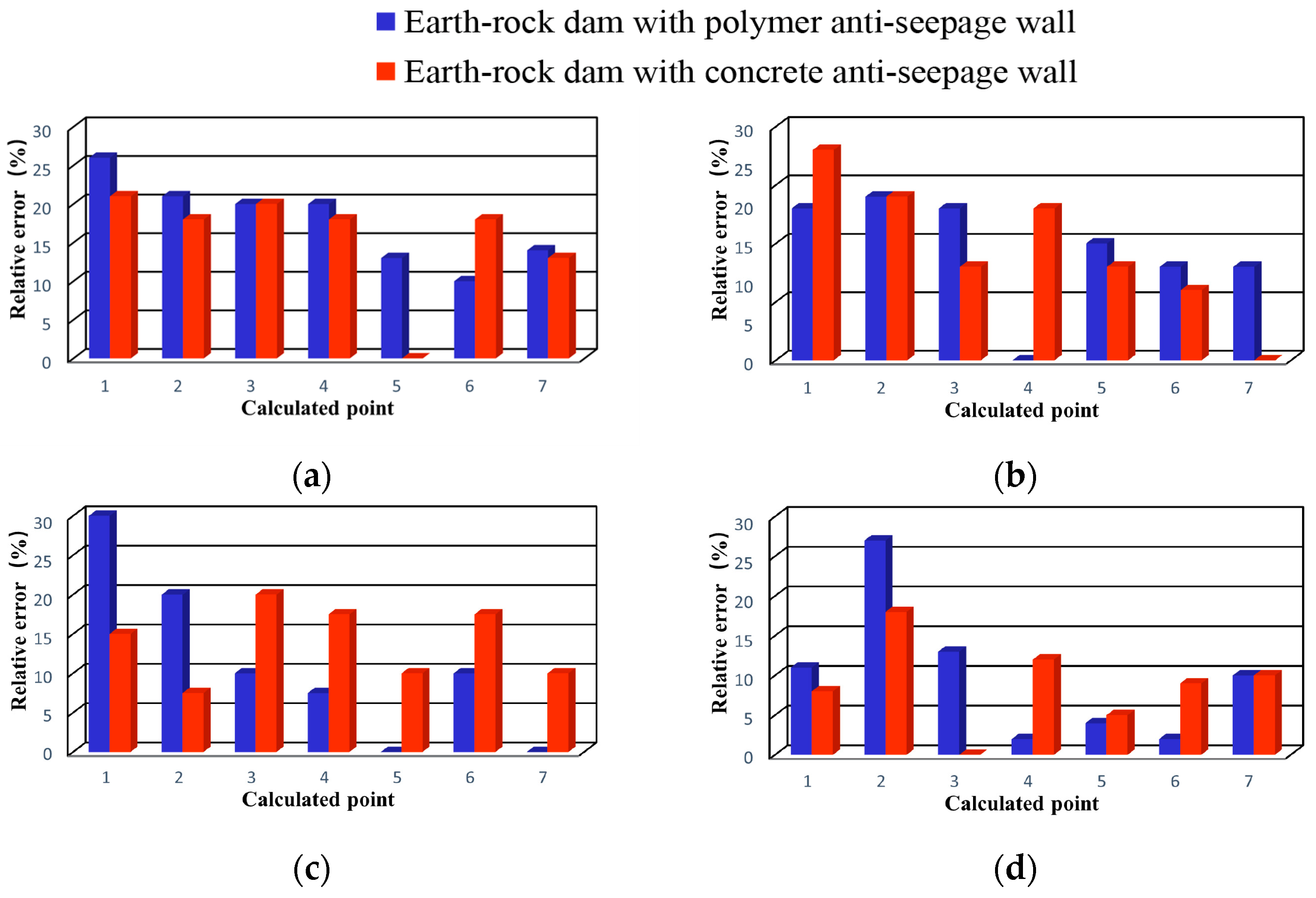
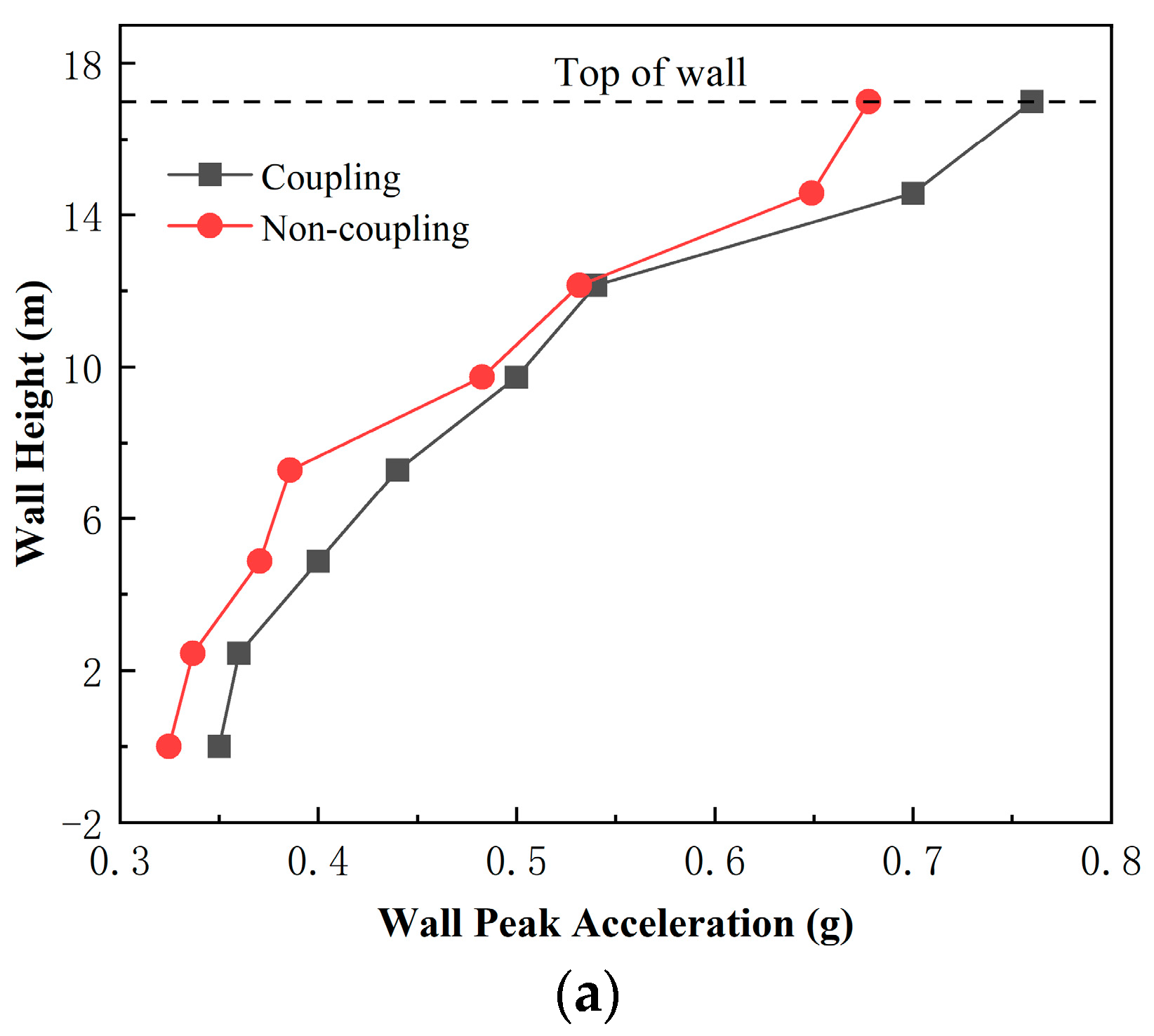
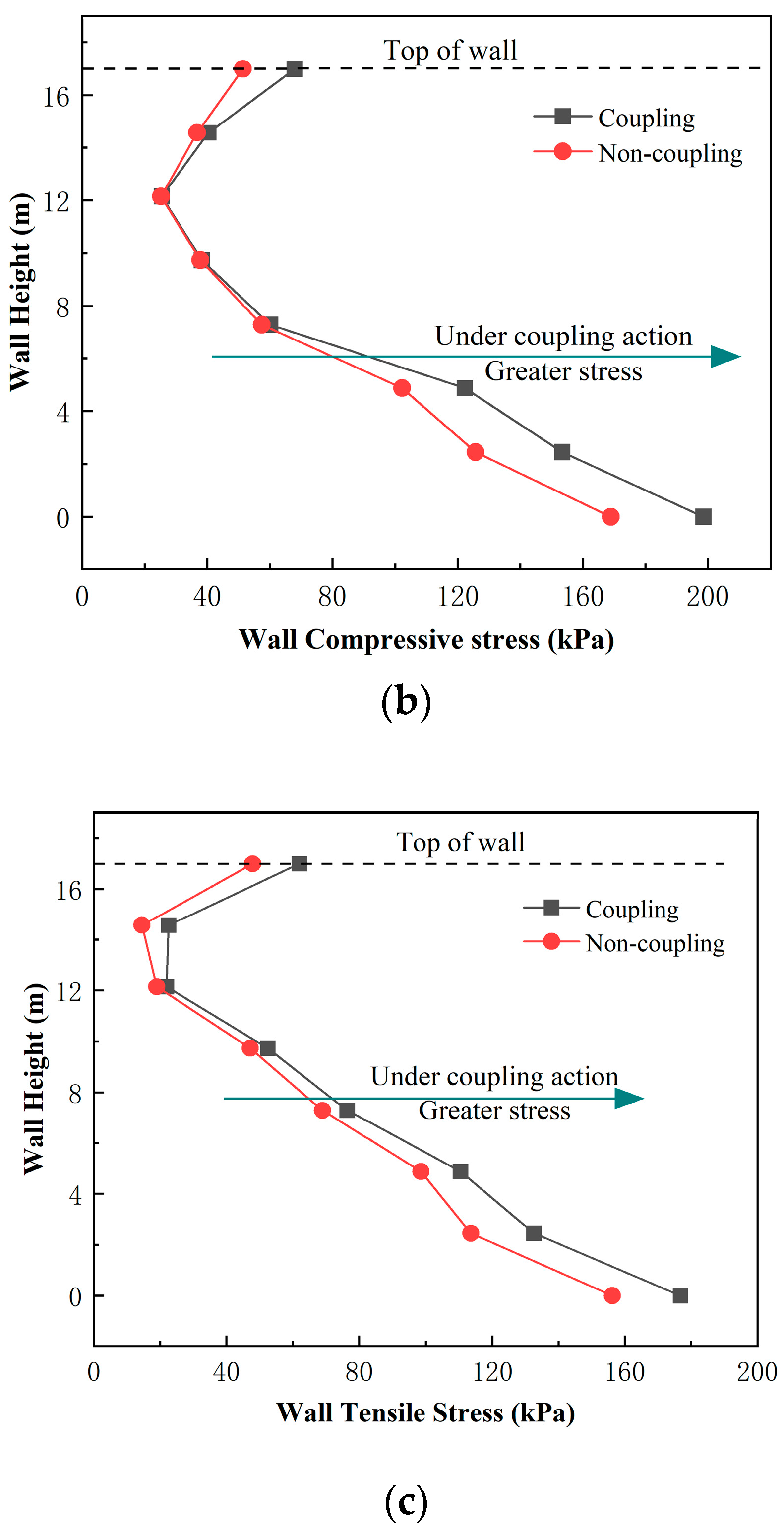
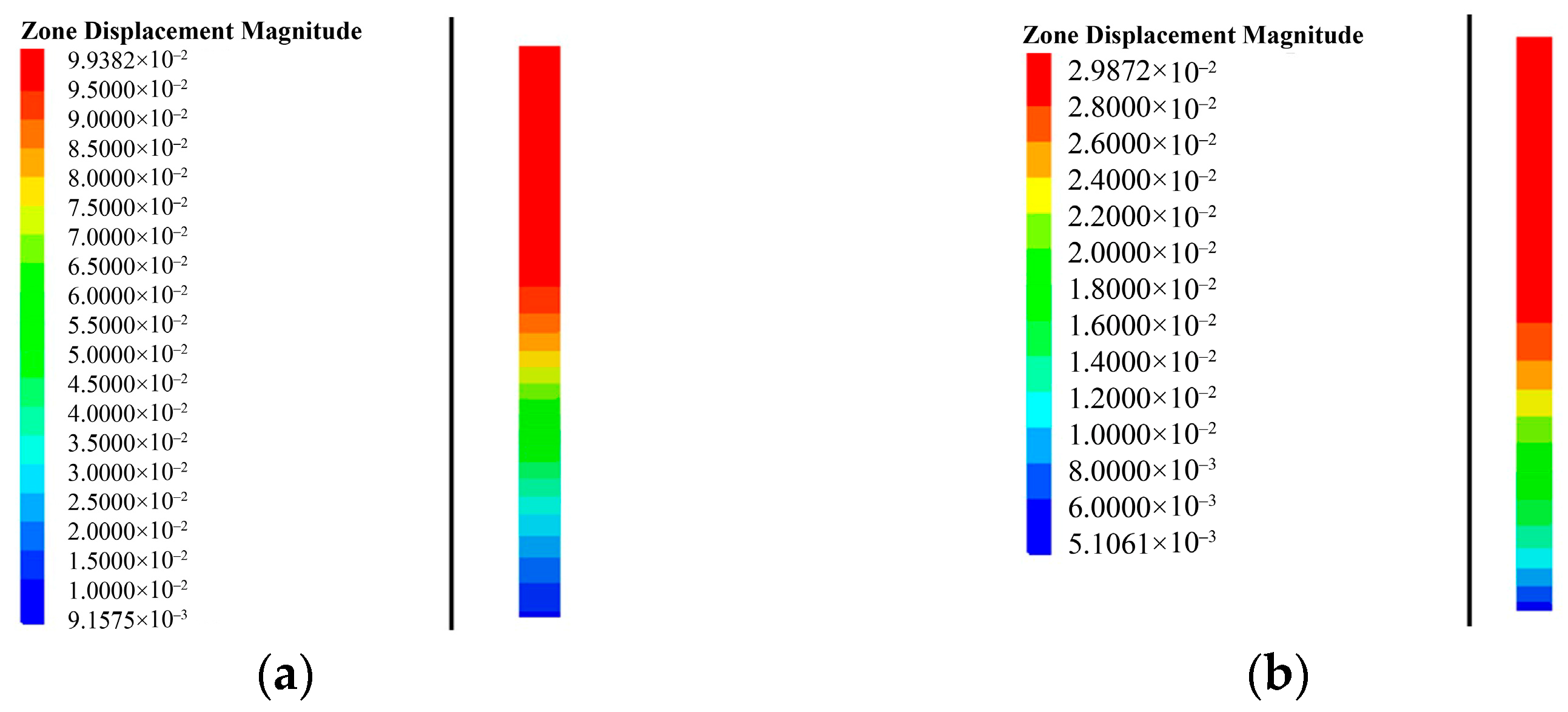
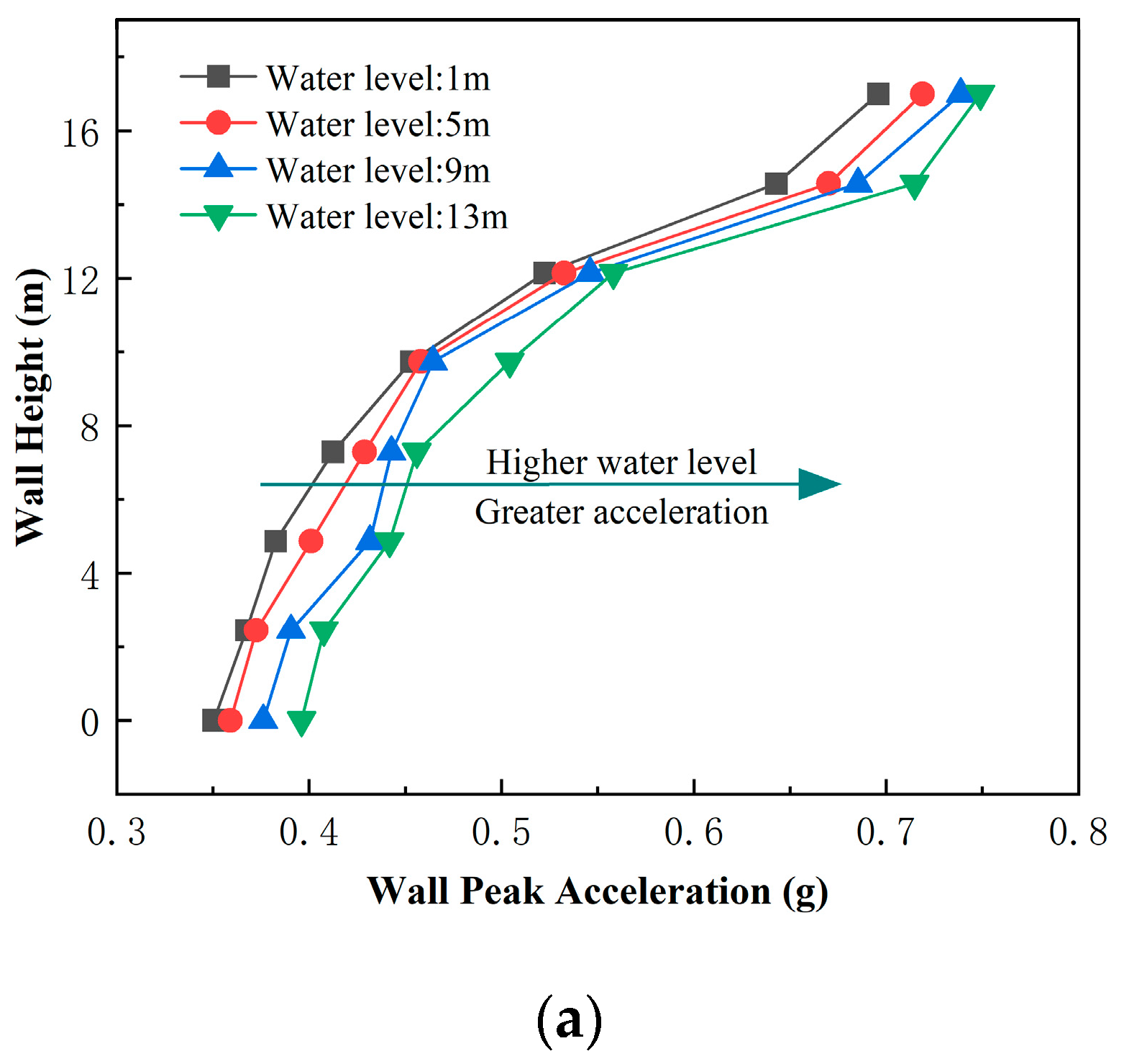
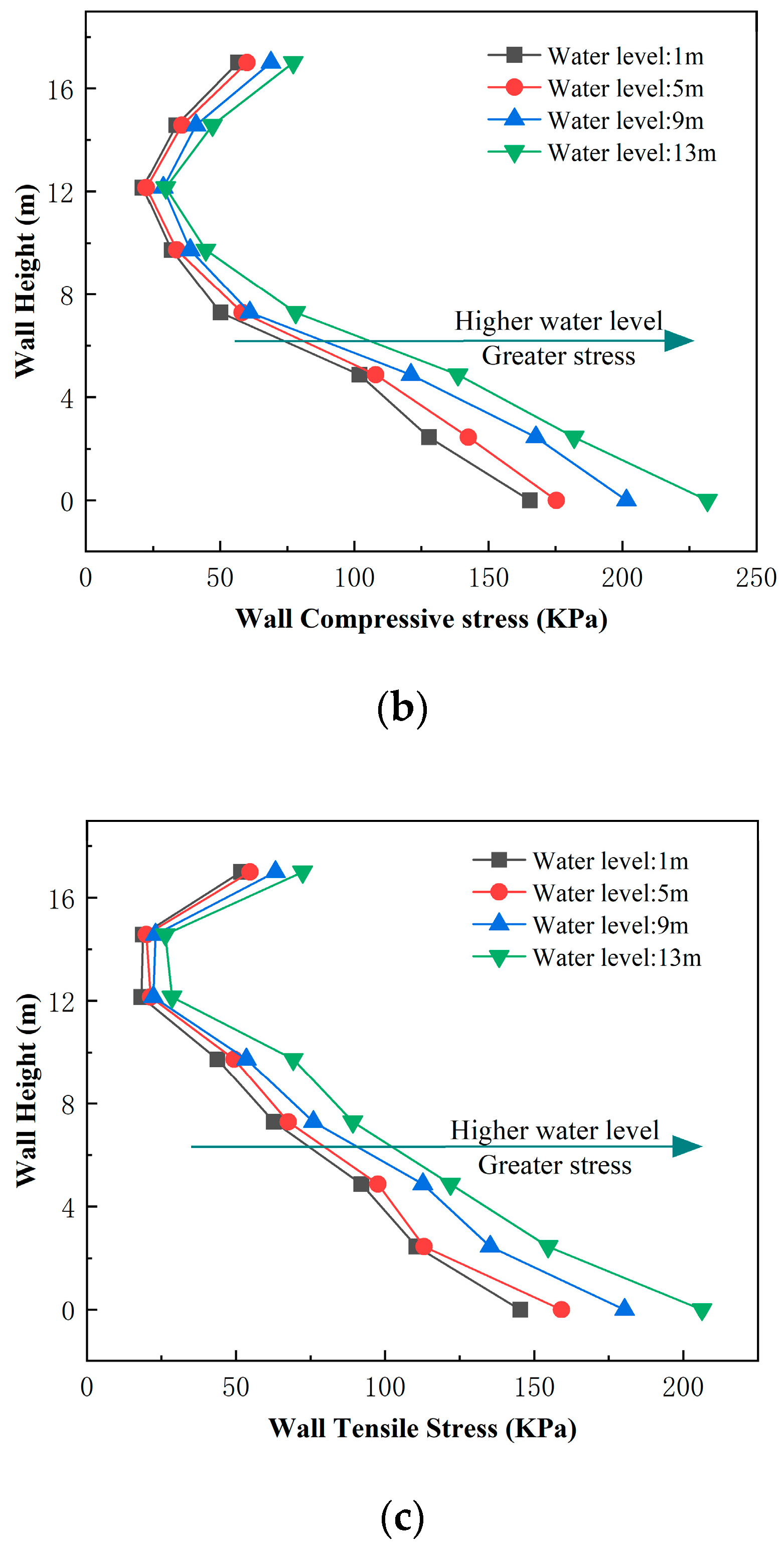
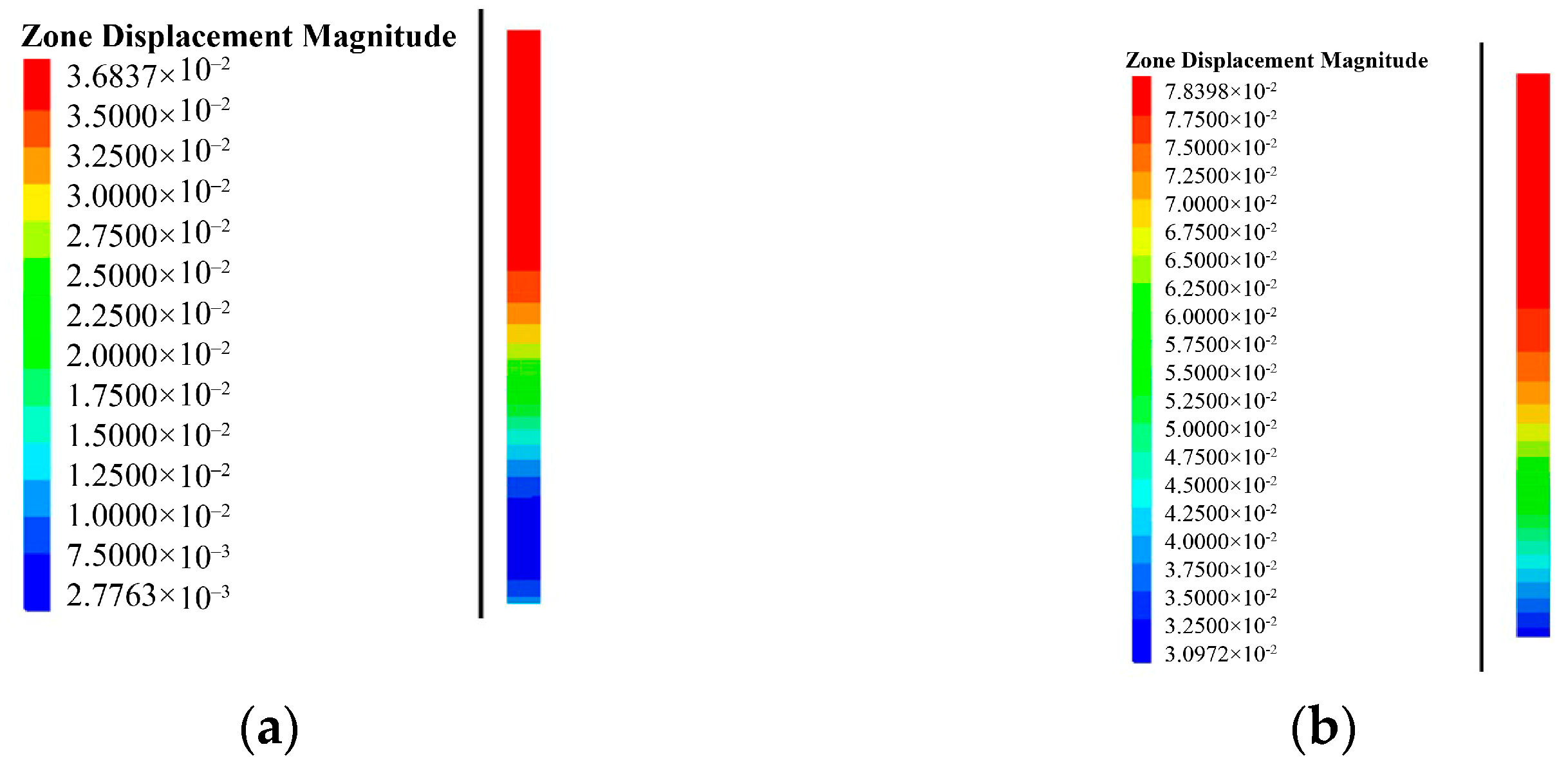

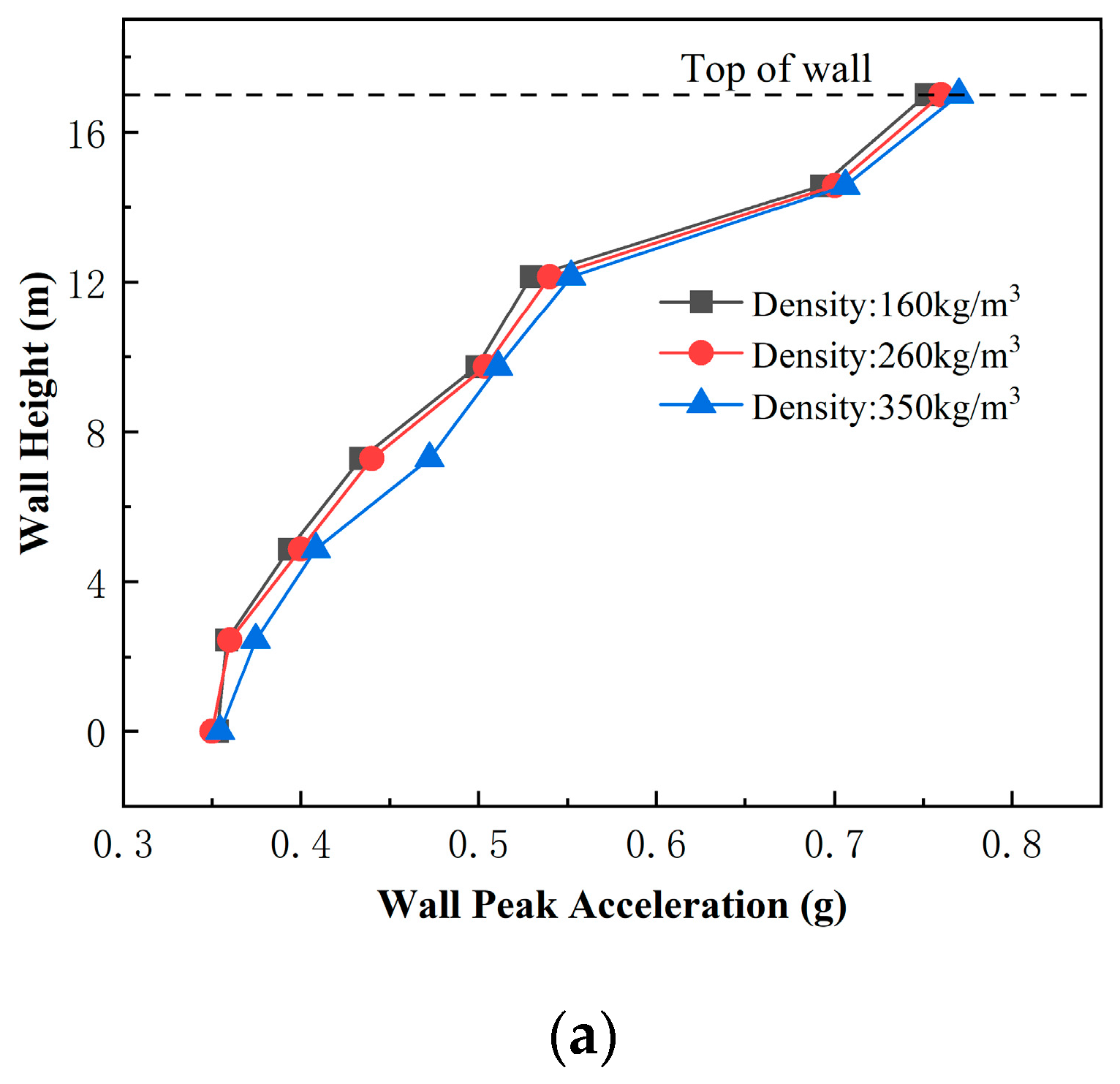
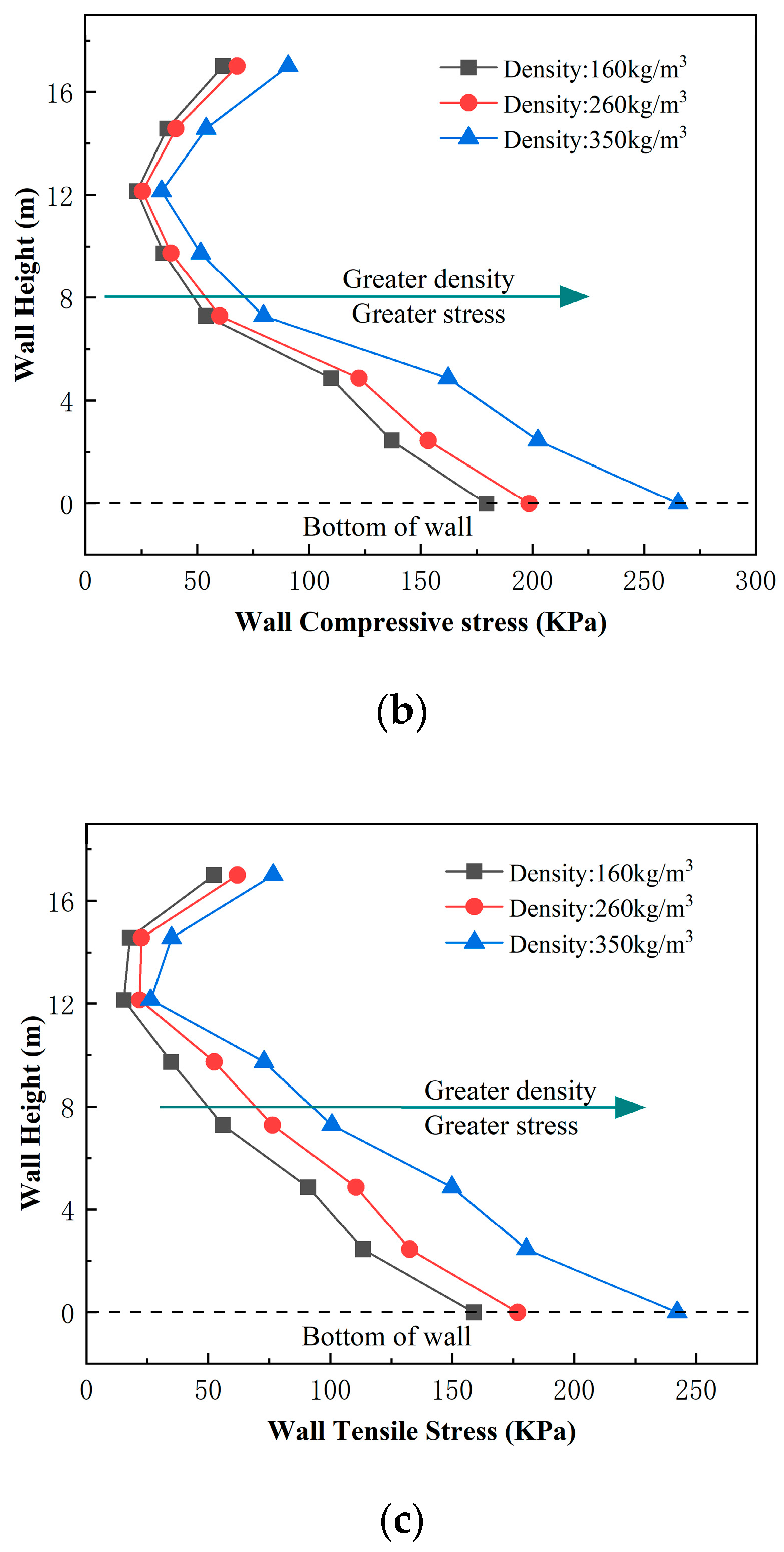
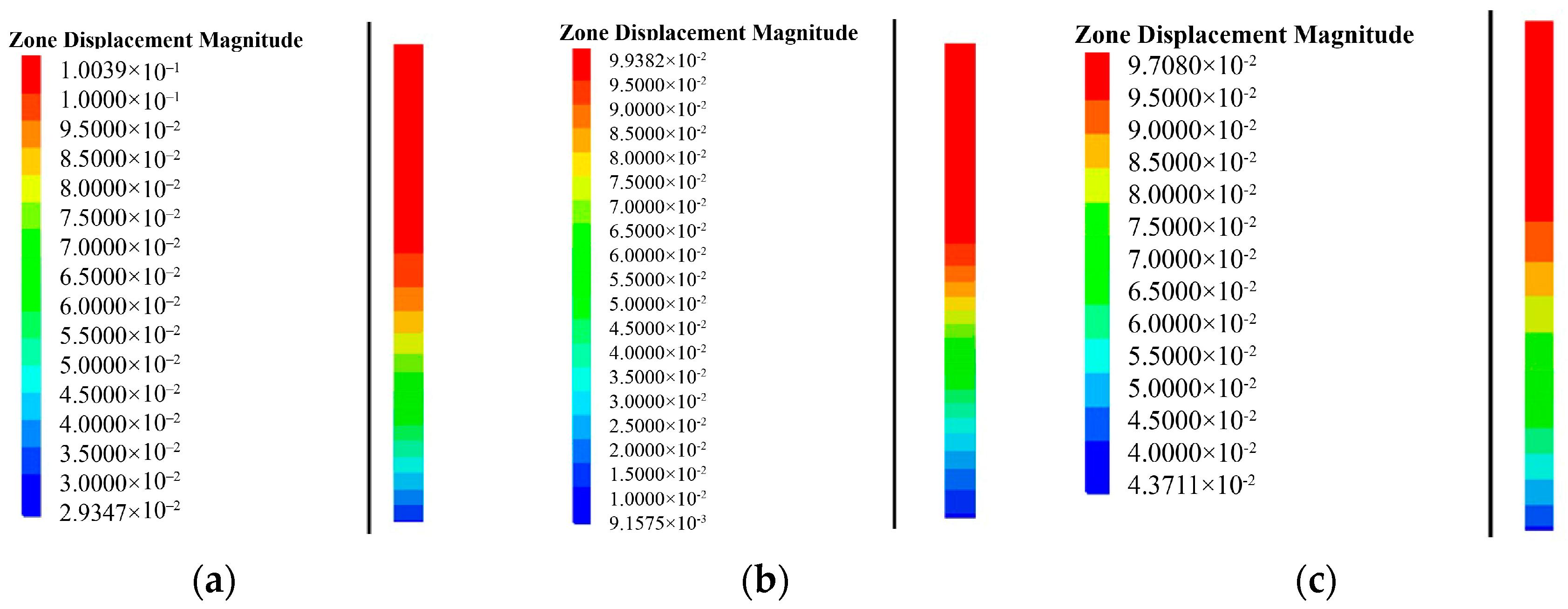
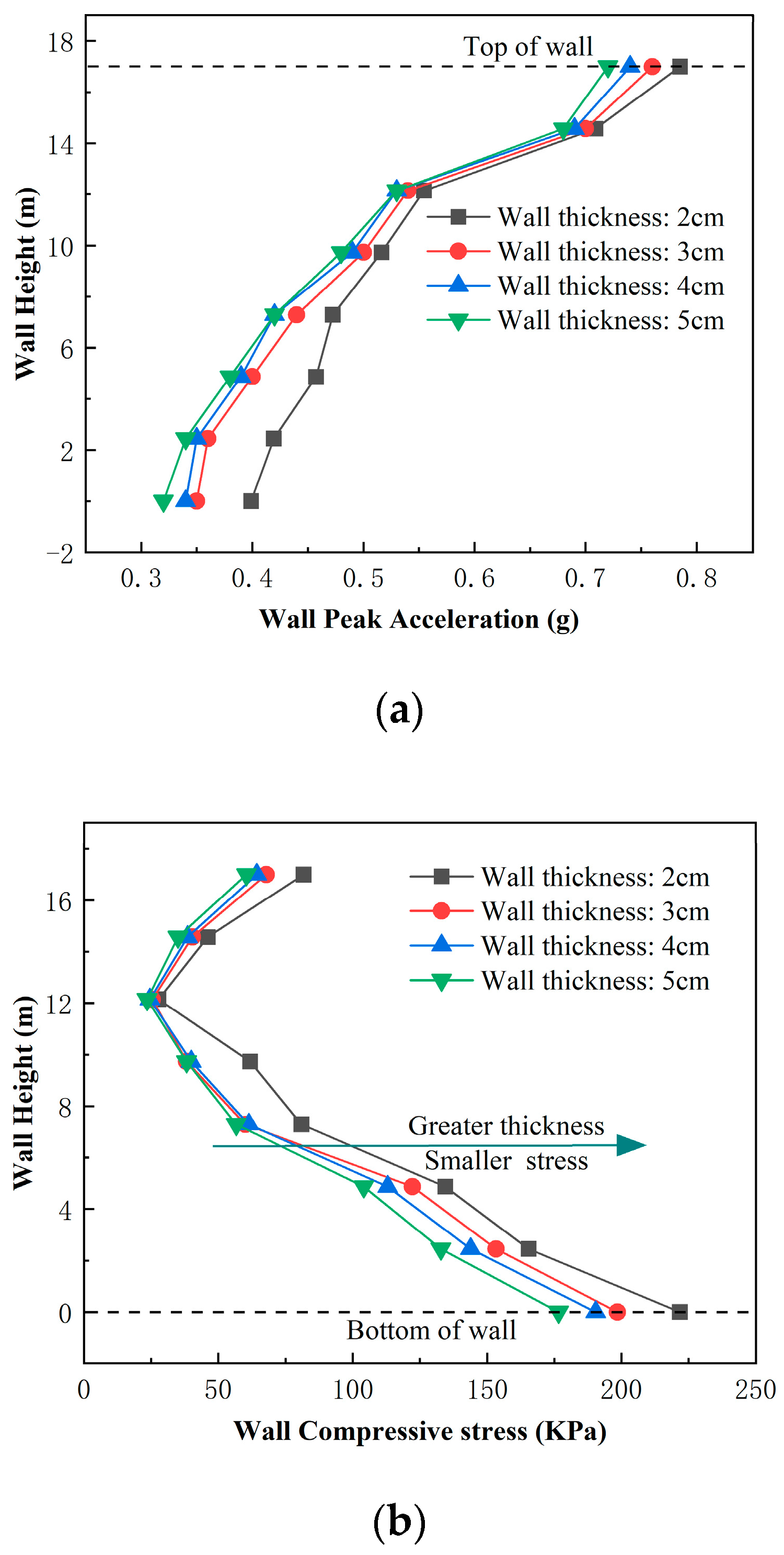
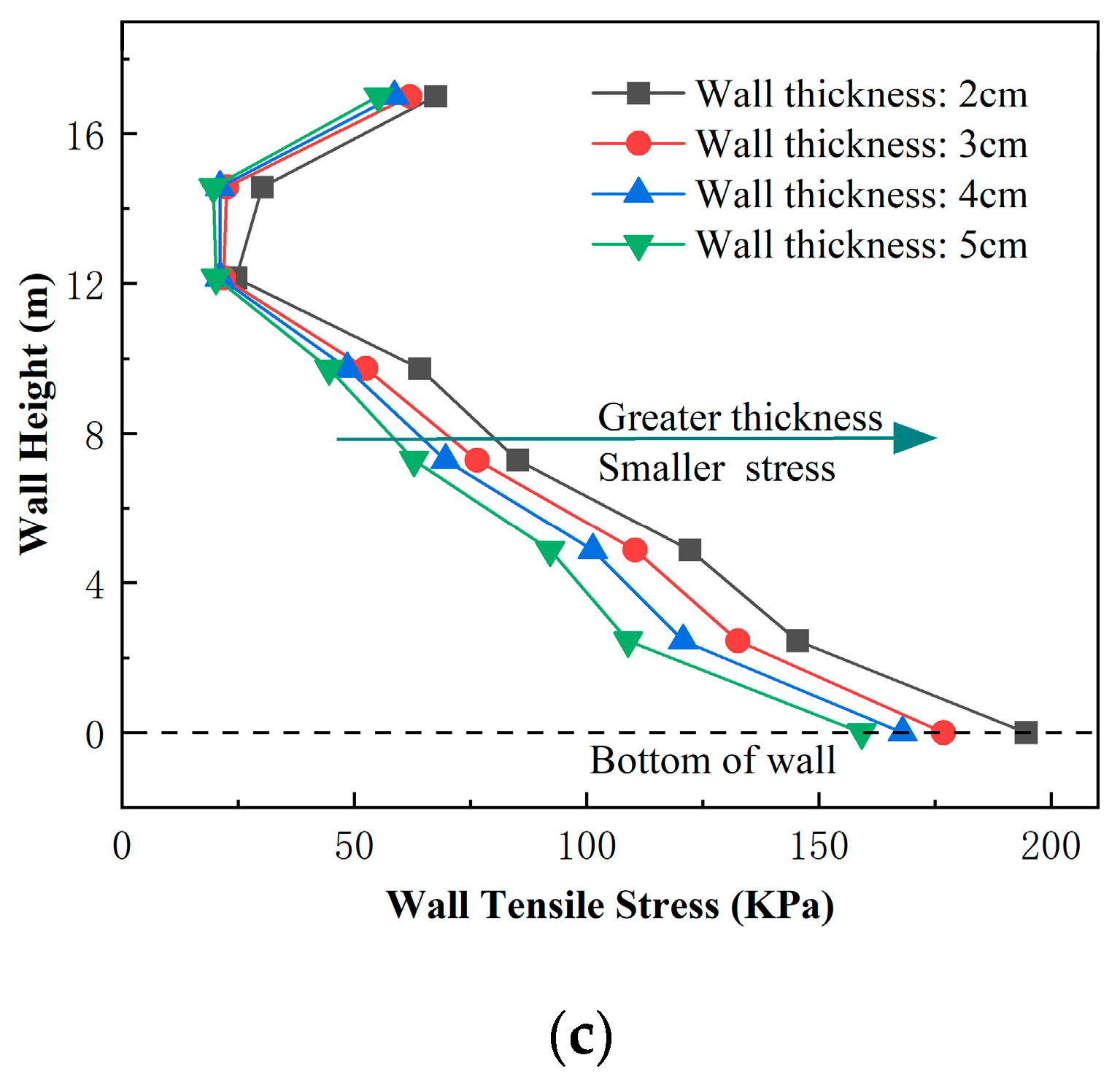
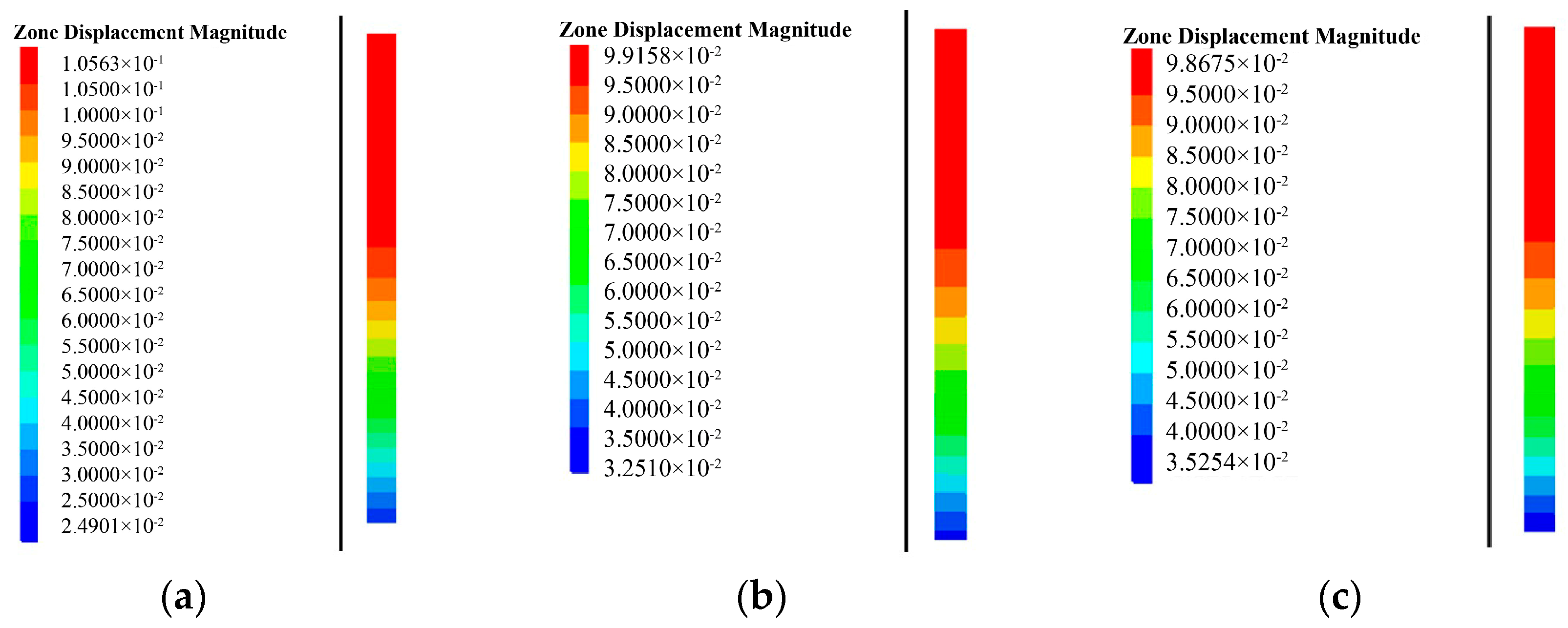
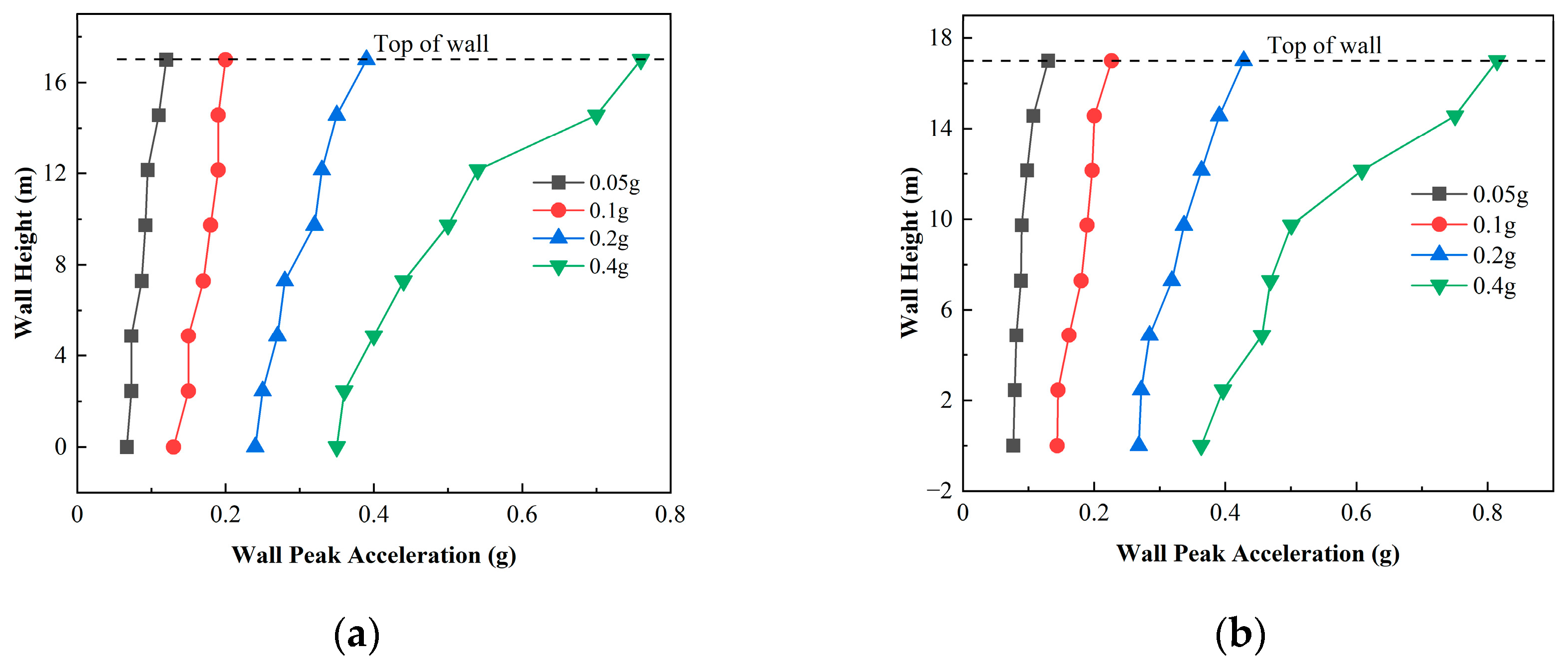
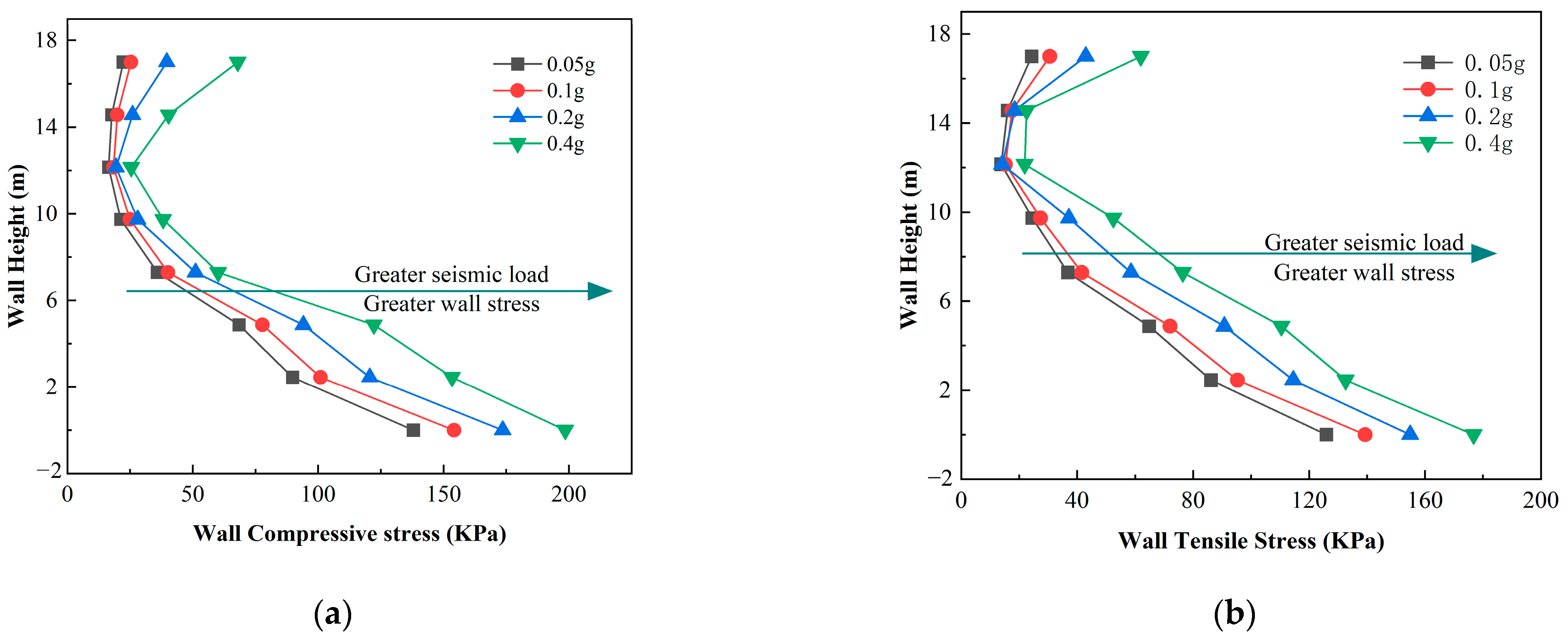
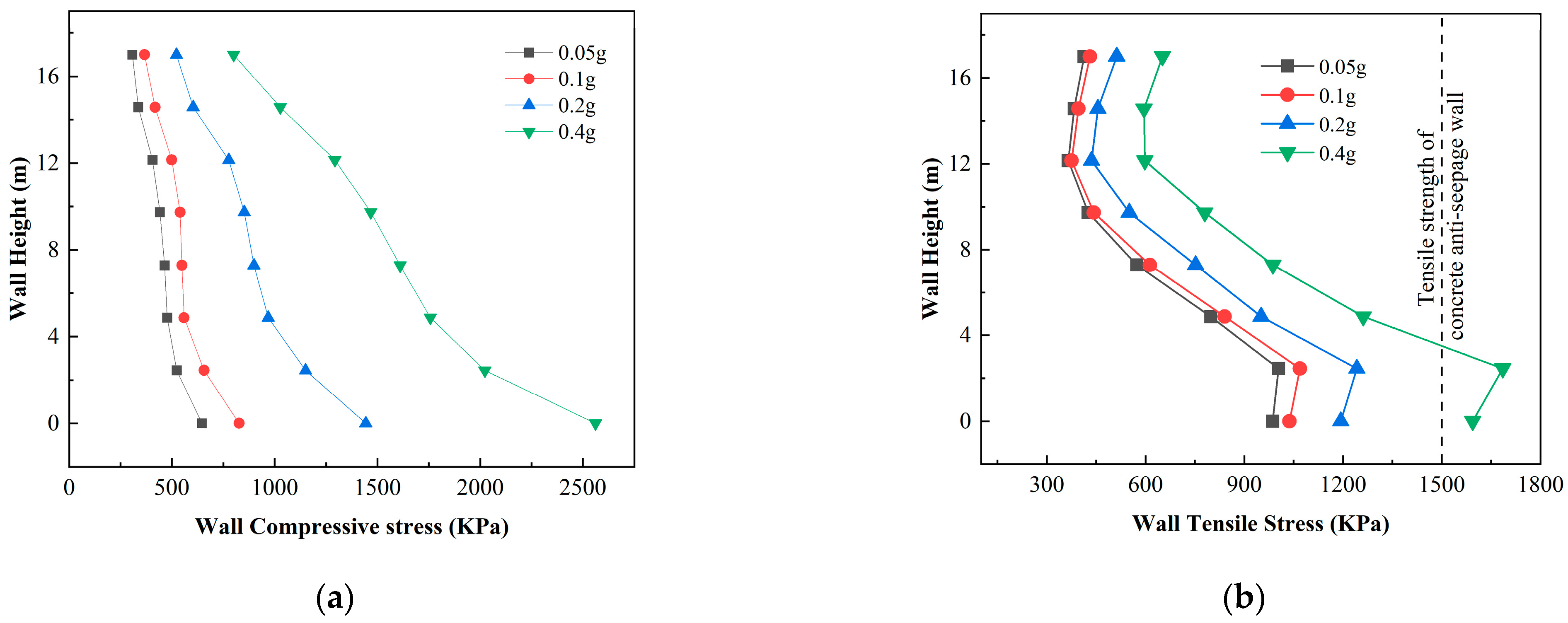
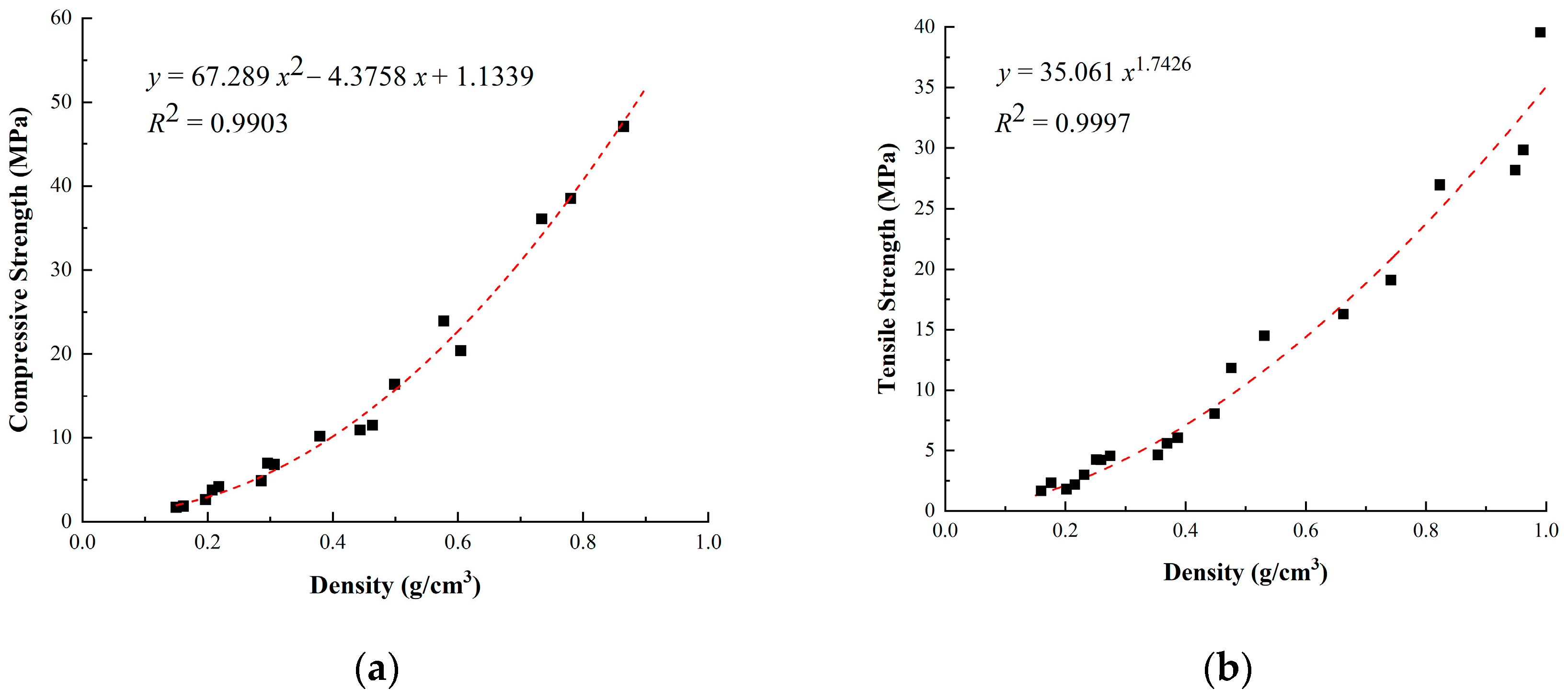
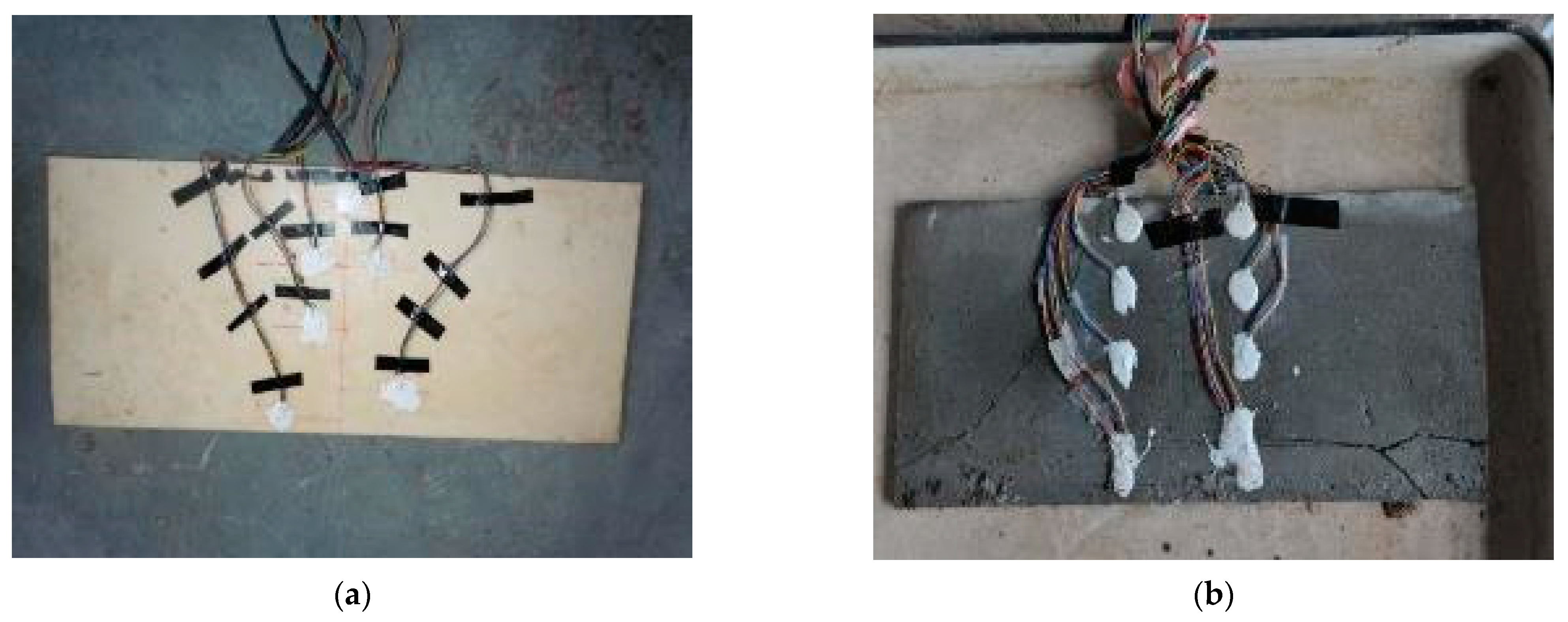
| Young’s Modulus (Pa) | Density (kg/m3) | Poisson Ratio | Permeability Coefficient (m/s) | Porosity | Cohesion (Pa) | Internal Friction Angle (°) | |
|---|---|---|---|---|---|---|---|
| Soil | 3.72 × 107 | 2000 | 0.35 | 2.3 × 10−7 | 0.3 | 2.22 × 104 | 11.3 |
| Polymer-I | 1.80 × 107 | 160 | 0.18 | 10−9 | - | - | - |
| polymer-II | 2.00 × 107 | 260 | 0.20 | 10−9 | - | - | - |
| polymer-III | 1.09 × 108 | 350 | 0.22 | 10−9 | - | - | - |
| Concrete | 2.00 × 109 | 2400 | 0.20 | 2.6 × 10−9 | - | - | - |
| Parameter | 1 | 2 | 3 | 4 |
|---|---|---|---|---|
| 1.217 | 0.212 | 0.198 | 0.047 | |
| 4.273 | 0.077 | 0.179 | 1.009 |
| Physical Quantity | Dimension | Similarity Relation | Similarity Ratio |
|---|---|---|---|
| Length, l | |||
| Density, | [] | 1 | |
| Elastic modulus, E | [] | 1 | |
| Gravity, g | [] | 50 | |
| Area, s | |||
| Mass, m | [][]3 | ||
| Force, F | [][]3[] | = | |
| Load, P | [][]2[] | = | |
| Vibration frequency, f | []−1/2[]1/2 | = | 84.08 |
| Speed, v | []1/2[]1/2 | = | 0.84 |
| Acceleration, EI | [] | = | 70.7 |
| Stress, σ | [][][] | = | 0.71 |
| Strain, ε | [][][]/[] | = | 0.71 |
| Average Value/% | Variance/% | |
|---|---|---|
| Earth-rock dam model with | 10.4 | 7.4 |
| polymer antiseepage wall | 9.9 | 6.3 |
| Working Condition | Polymer Wall (g) | Concrete Wall (g) |
|---|---|---|
| 1 | 0.12 | 0.13 |
| 2 | 0.20 | 0.23 |
| 3 | 0.39 | 0.43 |
| 4 | 0.76 | 0.81 |
Disclaimer/Publisher’s Note: The statements, opinions and data contained in all publications are solely those of the individual author(s) and contributor(s) and not of MDPI and/or the editor(s). MDPI and/or the editor(s) disclaim responsibility for any injury to people or property resulting from any ideas, methods, instructions or products referred to in the content. |
© 2023 by the authors. Licensee MDPI, Basel, Switzerland. This article is an open access article distributed under the terms and conditions of the Creative Commons Attribution (CC BY) license (https://creativecommons.org/licenses/by/4.0/).
Share and Cite
Zhang, J.; Chen, X.; Li, J.; Xu, S. Seismic Response of Earth-Rock Dams with Innovative Antiseepage Walls on the Effect of Microscopic Fluid-Solid Coupling. Sustainability 2023, 15, 12749. https://doi.org/10.3390/su151712749
Zhang J, Chen X, Li J, Xu S. Seismic Response of Earth-Rock Dams with Innovative Antiseepage Walls on the Effect of Microscopic Fluid-Solid Coupling. Sustainability. 2023; 15(17):12749. https://doi.org/10.3390/su151712749
Chicago/Turabian StyleZhang, Jingwei, Xuanyu Chen, Jia Li, and Shuaiqi Xu. 2023. "Seismic Response of Earth-Rock Dams with Innovative Antiseepage Walls on the Effect of Microscopic Fluid-Solid Coupling" Sustainability 15, no. 17: 12749. https://doi.org/10.3390/su151712749
APA StyleZhang, J., Chen, X., Li, J., & Xu, S. (2023). Seismic Response of Earth-Rock Dams with Innovative Antiseepage Walls on the Effect of Microscopic Fluid-Solid Coupling. Sustainability, 15(17), 12749. https://doi.org/10.3390/su151712749







